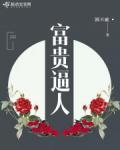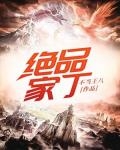Volume 2: Soaring! The Overlord of the Region Chapter 297: Japan Intends to Invade Korea (I)
Generally speaking, plans can never keep up with changes.
Originally, in Zhu Youdong's plan, in terms of military, he only planned to establish two or three model armies, set up military academies, and prepare talent reserves: the Ming Dynasty now has numerous problems, including ideology and culture, economic operation, political system, talent selection, official administration, etc., which all need to be reformed and rectified. Before these problems are solved, although the Ming Dynasty is huge, the country's power cannot be fully mobilized. Therefore, it is not suitable for large-scale military expansion at this time.
Unfortunately, there are so many travelers in this plane, and two of them are his neighbors. They don't give him time to slowly farm.
There was no other way, so he had to expand the army. After all, it had not been long since the state assets were sold, and the Ministry of Revenue still had money, so he could still afford to expand.
Of course, it was also fortunate that he expanded the army, because at this time in East Asia, Japan was also beginning to build a new army on a large scale.
"Your Highness, after nearly half a year of work by me and others, and thanks to the support of the daimyo, according to the organization you set, the seven divisions of the new army are now fully staffed, and all officers have been deployed."
"Yoshi! Ii Naotaka, explain in detail the specific composition of these seven divisions to the Excellencies Date Gon Chunagon, Maeda (Toshitsugu) Sangi, Mori (Terumoto) Chunagon, Fujido Sado-no-kami, and Shimazu Satsuma-no-kami."
"Hi! Your Excellencies, according to the order of His Majesty, the new army of our country of Japan will no longer be formed by each daimyo, but will be formed by absorbing local people according to the region. According to the different assembly places of the seven divisions, they are named Edo, Osaka, Kyoto, Gifu, Sendai, Kasugayama and Kagoshima Divisions, and are numbered from one to seven. Each division has three infantry regiments, one cavalry regiment, one artillery battalion and one engineering battalion. In addition, there are command officers and non-combat personnel such as military doctors and clerks. Fighting personnel. A division is fully staffed with 15,000 people. The infantry regiment is fully staffed with 3,500 people, all equipped with flintlock rifles and bayonets. The cavalry regiment is fully staffed with 1,500 people, equipped with 2,000 war horses, and another 500 horsemen are responsible for taking care of the war horses. The war horses are currently mainly breeds from Northeast China and Hokkaido. His Highness has already contacted the Spaniards, and Western horses will be shipped here soon. The artillery battalion has 1,500 people, and plans to be equipped with 50 artillery pieces of various types. Currently, the rate of artillery in place is less than 10%..."
Ii Naotaka reported loudly there, and Date Masamune and others sitting next to him felt a toothache: Everyone had seen the 3,000 new troops of the current general in the Osaka Summer Campaign. Facing the elite Toyotomi army led by famous generals such as Goto Mototsugu, the 3,000 new troops beat the opponent to pieces in one encounter. If the seven newly built divisions, a hundred thousand troops, had the combat power of the previous 3,000 new troops, the Tokugawa family would be more than enough to sweep across Japan several times, so what would they need these daimyo for?
These major outer daimyo were very upset, and Tokugawa Yoshinao, who was sitting in the main seat, was also very upset: the framework of the new army had been set up, but there were too many areas that needed to be improved.
It is certain that the production capacity of firearms, artillery, and bullets is seriously insufficient. However, these are not a big deal, after all, the new army is mainly focused on training at this stage, and if the equipment is insufficient, then we can train in turns.
What’s most annoying is actually the height and overall physical fitness of the Japanese people of this era!
The total grain output of Japan at that time was about 20 million koku. And how many people were there in Japan at that time? Nearly 20 million. Even if we calculate that one koku a day is about 160 kilograms, Japan at that time was only barely self-sufficient. And this self-sufficiency can only be achieved in theory if it is absolutely average.
In fact, Japan at that time implemented the system of five officials and five civilians : that is, the samurai class would unconditionally take half of the annual food!
The remaining half does not entirely belong to the peasants: Japan also has a large landlord class, and they have to take at least half of the remaining half!
Therefore, it is very common for Japanese farmers to have never eaten pure rice in their entire lives.
What to do if there is not enough food? Then you can only rely on hunting, digging wild vegetables, and eating various grains to fill your stomach. This way, you will not starve to death, but the nutrition...
Such extremely low nutritional intake will of course lead to poor development. According to the description of the height of Japanese people by some Western missionaries in the historical plane, the average height of Japanese men in the 16th and 17th centuries was less than 1.5 meters.
A group of men about 1.4 meters tall were fighting on short Japanese horses. No wonder Western missionaries at the time wrote in their diaries that it was a group of children riding donkeys and playing.
Relatively speaking, although the people in Thailand at that time were shorter due to their ethnicity, thanks to the local climate, as long as the society was stable, there would be no shortage of food. In addition, the Thai time travelers were the first to come to power, and they have been working hard for twelve years and have also formulated a corresponding nutritional diet plan. Therefore, the average height of Thai men has now reached more than 1.5 meters - taller than the Japanese!
As for the Ming Dynasty? Isn't there a saying that a man is seven feet tall? This foot is the Han foot. One Han foot is about 0.237 meters, so the average height of the men in the Ming Dynasty was more than 1.6 meters.
So Tokugawa Yoshinao was worried: he could work hard to deal with the lack of equipment, after all, the Yamato people were one of the few people in the world who could endure hardships and work hard. But the gap in physical fitness could not be reversed without decades, two or three generations of accumulation!
I can't think about it anymore. If I keep thinking about it, I really don't need to fight anymore. I'll just commit seppuku and beg for mercy!
"Everyone, during the land survey during the Keicho period, Japan had more than 18.9 million people, including more than 67,000 samurai. Last year, the new emperor ascended the throne and changed the era name to Genwa, and another land survey was conducted. As a result, in the past 20 years, the number of citizens has increased to more than 19.8 million, and the number of samurai has increased to more than 89,000..."
Glancing at the solemn faces of the daimyo, Tokugawa Yoshinao continued, "This is shocking! Ladies and gentlemen, Japan is a country with many volcanoes, frequent earthquakes, and extremely scarce natural resources. If we continue like this, within thirty years, this country will starve itself to death. No, perhaps there will be a bigger war, millions of people will die, and then it will continue to linger on... Is this the situation you want to see?"
Date Masamune and the others looked at each other and bowed down with different feelings: "Your Highness has a long-term vision. We are willing to listen to your advice on long-term peace and stability."
"I don't have a way to achieve long-term peace and stability, but I know that a country like Japan, which has developed to the level it is today, has no other way to go except external expansion!"






